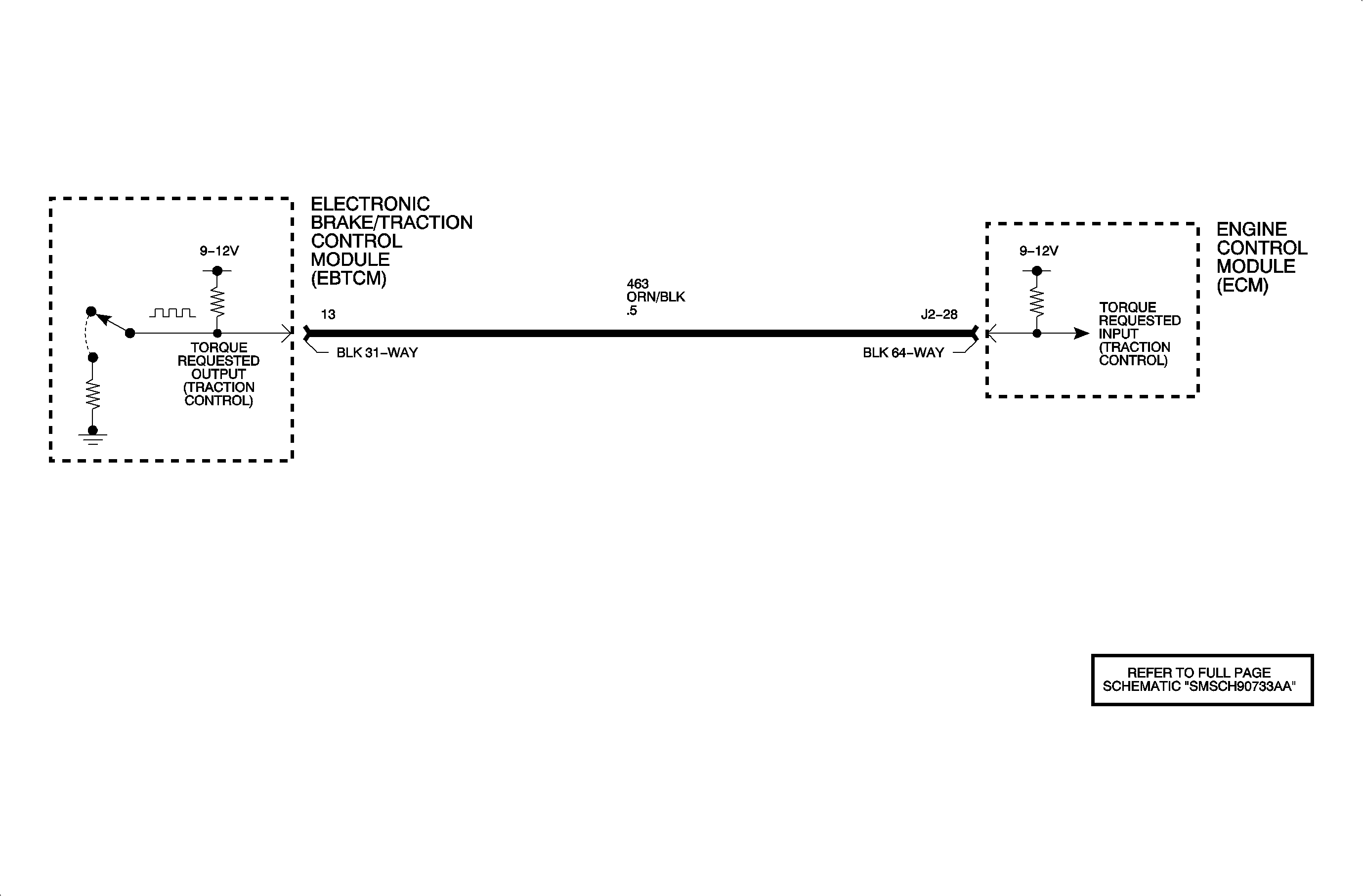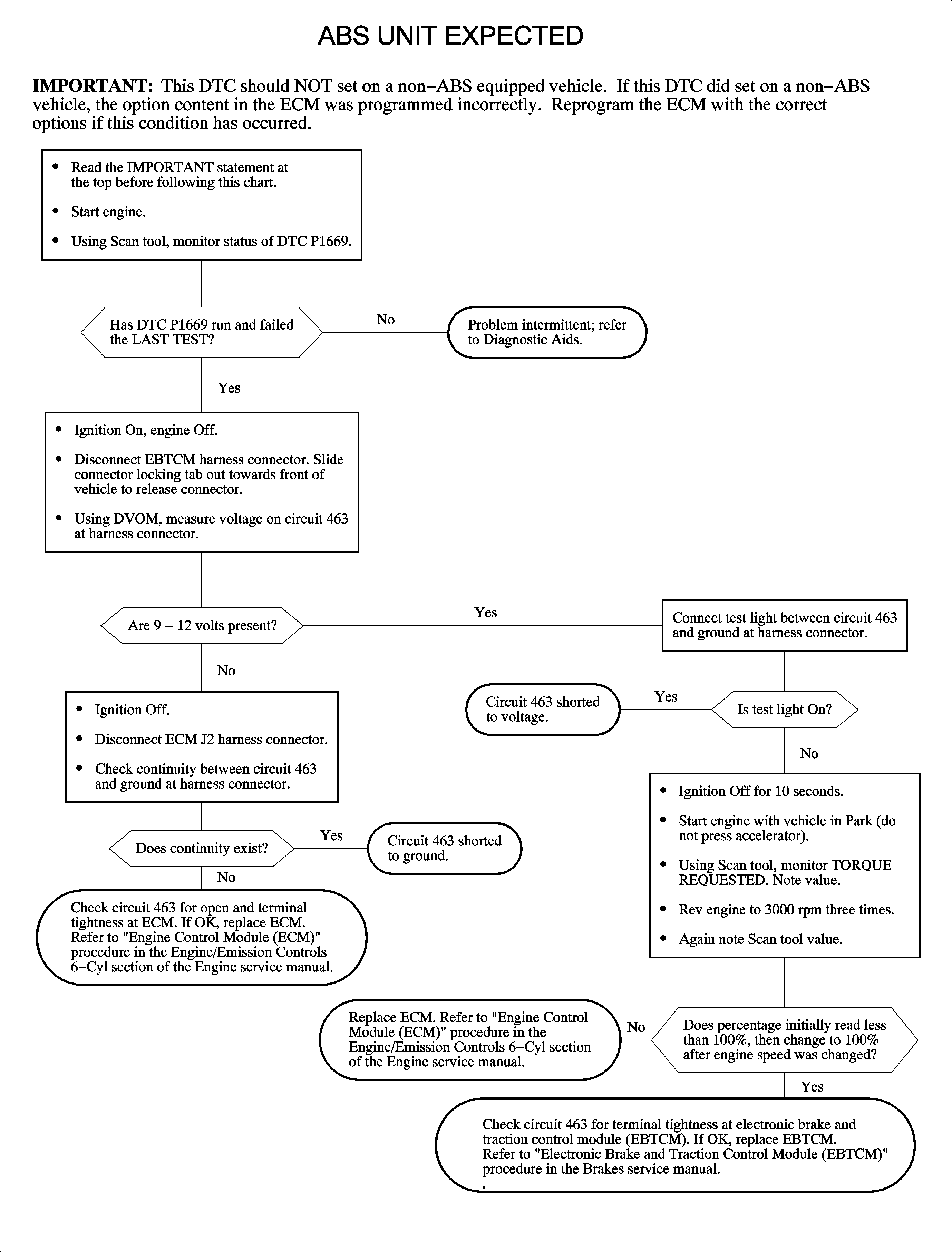
Circuit Description
The electronic brake and traction control module (EBTCM) sends torque reduction request information to the ECM over circuit 463. This information is needed by the ECM to reduce engine power via spark retard or injector disable, in extreme cases, during a traction control event. The torque reduction request signal is a 0-12 volt pulse width modulated square wave created by the EBTCM grounding circuit 463. The signal circuit is pulled up to 9-12 volts in both the ECM and EBTCM. The EBTCM continuously pulse width modules the signal over circuit 463 even if no traction control event is present. This is to allow the ECM to detect a fault in the torque reduction request circuit. DTC P1669 will set if the ECM does not receive a signal from the EBTCM over the torque reduction request circuit with the engine running when the ECM has the antilock brake option programmed.
Conditions for Setting the DTC
DTC P1669 will set if the ECM does not receive any torque reduction request signal over circuit 463 when:
| • | The conditions exist for longer than 2 seconds. |
| • | The ECM has ABS programmed as an option. |
| • | The engine speed is greater than 600 RPM. |
DTC P1669 runs continuously with the engine running.
DTC P1669 is a type D DTC.
Diagnostic Aids
Important: If this DTC is set on a non-ABS vehicle, the ECM option content was programmed incorrectly. If this is the case, reprogram the ECM without ABS.
Important: If a fault exists on circuit 463, the EBTCM will NOT set a DTC.
To locate an intermittent problem, use the scan tool to monitor DTC P1669 LAST TEST with the engine running. Wiggling the wires while watching for a change from PASSED to FAILED may locate the area where an open, short to ground, or short to voltage on circuit 463 exists.

